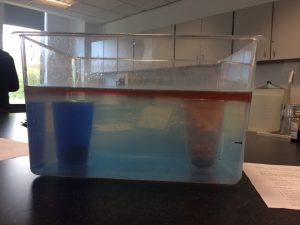This weeks theme was on climate change. First of all in the lecture we went through what climate change was. According to the lecture PowerPoint climate is the average weather at a given point and time of year, over a period of typically around thirty years. We expect for the weather to change however for the climate to remain constant in that area, and also we want children to understand this also.
We also learned about the evidence to show this. We could get this evidence from weather recording, ice cores rocks, fossils and analysis of pollen and trees. We even discussed the effects of climate change, and how many areas of agriculture and nearly becoming deserts and are becoming unusable to harvest and to habitat animals. This made me understand more about how scientists research and find out the evidence to support this.
We also had to think about why this was important, and why it has to change sooner rather than later.
In the first workshop there were different stations which had different experiments which related to different biomes. A biome when search on google is a large ecological area on the Earths surface. The list of different biomes are desert, grassland, rainforest, deciduous forest, taiga and tundra.
Before we started each group were given a piece of paper with a biome. We were given tundra. We had to fill in a worksheet about how we would survive in the tundra if we were in a plane crash. I found this effective as I had to research and I found out a lot more about the biome.
In the first station we tried to create a tornado with water, fairy liquid and food colouring. We added this all together and swirled it for about ten seconds which would create a miniature tornado.

In the second station we filled a tank with room temperature water we then had a cup of hot water with red colouring, and a cup of cold water with blue colouring. We then poured the water to the tank to see what would happen.

From the picture you can see that the cold water stayed on the bottom of the tank and the hot water raised to the top of the tank. This would be a great activity for primary teaching as the food colouring makes it easier for children to understand what is happening.
There was also other stations which made me think more about the biomes that there are. For example making snowflakes out of paper. Which I found was a good activity for children as they would find this fun and learn more about the weather.

I found the first workshop very interesting, as I believe children will learn so much from this, as it is visual and also a practical way of learning. I think a lot more children would be involved, as it is not boring like writing in a booklet.
In the second workshop we learned more about the government policies, issues and if they are effective or not. We were also given a group task where we had to discuss what action the government take to help such people as an elderly couple in New Orleans. This improved my communication skills as we had to work in team and work together to discuss our own ideas for each point.
Directed Study
1.Some misconceptions I had was that I did not know that the Scottish government had a aim to make by 2020 which was that they want the emissions to be 42% below bassline.
When watching “Antartica on the edge” I did not realise that Antartica was warming faster than anywhere else on the planet. I also did not think a metre of water would affect the globe very much, however it can cause so many floods all over the world. In the next 500 years scientists believe that the ocean will raise by 13 metres. If this is the case then this will case catastrophic disasters, for example many more hurricanes, tornados, etc.
2.The knowledge I have gained which is also shown in point one, will change the way that I live. I also completed the carbon footprint, and it analysed and said that I was at 140%, which is above average. I thought I was environmentally friendly, however I know I have to change the way a live so that I can at least make a difference. This is also important for me as a student teacher as I can teach children at a young age to do the same, and help them understand the consequences.
3.Things I will do would be to put less lights on in the house when I do not need them, eat local produce to decrease the delivery overseas. I would also try and eat more vegan produce so that a lot less animal farming is done so there is less methane going into the atmosphere. Also a lot of these cow farms are in the amazon where many trees are cut or burned down, which affects the environment even more.
Resources
“Antartica on the edge”
Measure you footprint – http://footprint.wwf.org.uk/?_ga=1.176985891.745195644.1442412124
Climate challenge (Scotland) Act 2009

